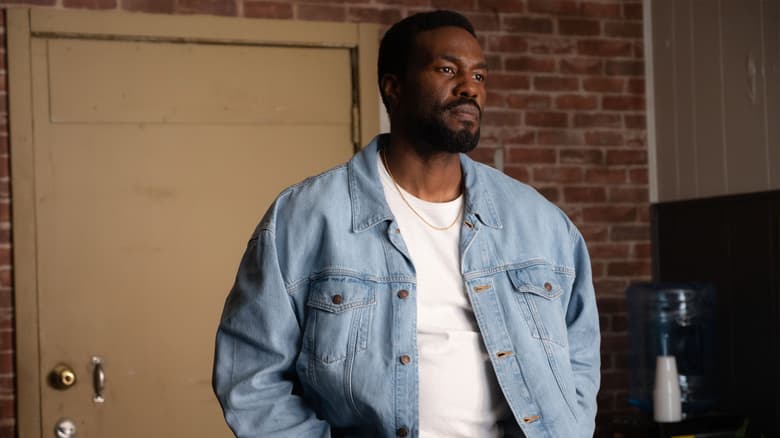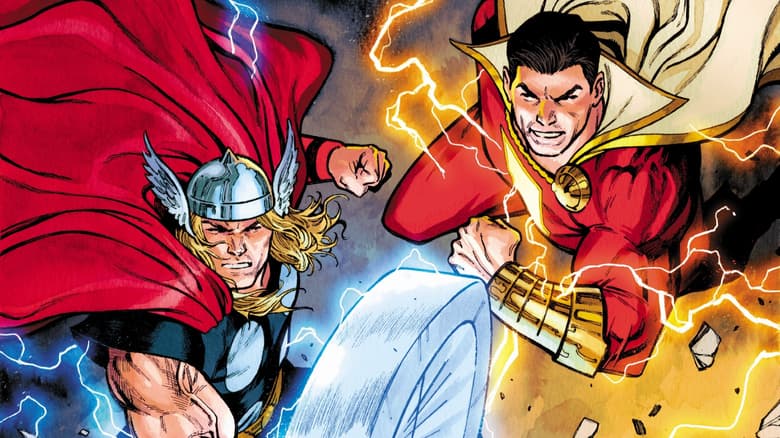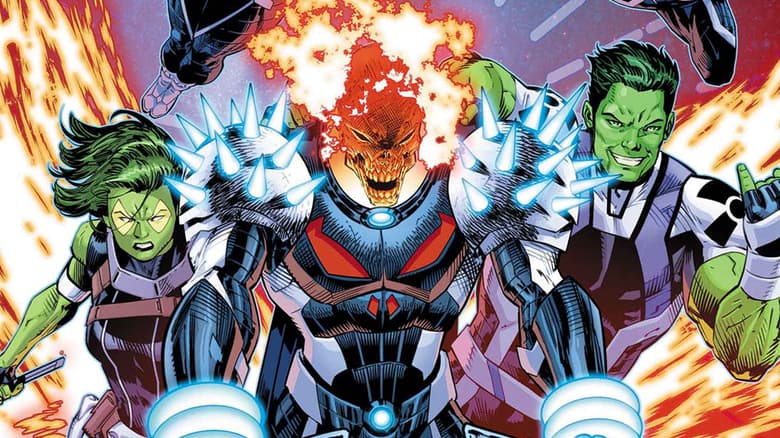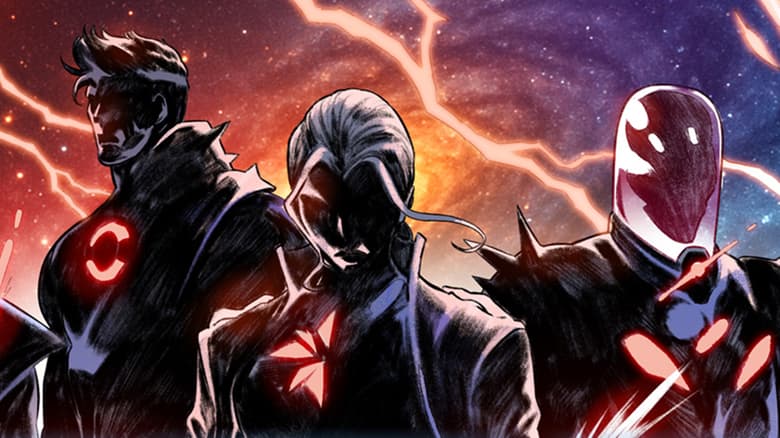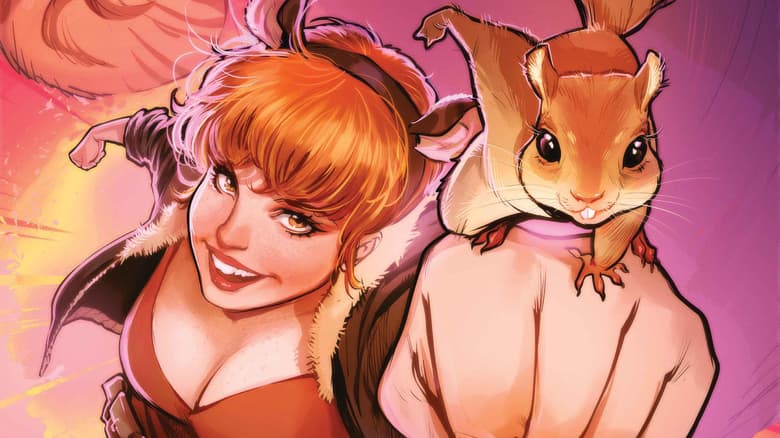Gamora: Going Deep
Nicole Perlman discusses mining the psyche of the most dangerous woman in the galaxy!

By Josh Weiss
The parenting skills of a sociopathic alien obsessed with death and devastation don’t tend to yield the most properly developed kids. Take, for instance, the life of everyone’s favorite green-skinned gal, Gamora—an invaluable member of the Guardians of the Galaxy who’s got the unfortunate burden of calling Thanos her father. But what was she like before she became the interstellar icon we know her as today?
Luckily, we don’t have to speculate because Nicole Perlman—who, along with James Gunn, co-scripted 2014’s “Marvel’s Guardians of the Galaxy”—explores just that with Gamora’s first solo comic series, in which a younger pre-Guardians incarnation of the woman warrior battles with her childhood demons, the first step in her trying journey from hazard to hero.
With GAMORA #4 on the way March 22, Nicole chatted with us on the challenge of getting into the psyche of and sympathizing with such an emotionally complicated—not to mention damaged–character who, thanks to her charming dad, is unnaturally obsessed with assassination and revenge more than any person—or alien, for that matter—should be.
Marvel.com: You’ve now tackled Gamora in comics and on the big screen. How did the experiences differ when it came to bringing her to life in each medium?
Nicole Perlman: Since the film was an ensemble piece that covered a lot of ground, I didn’t get to spend as much time with Gamora as I would have liked. Writing the comic has been a fulfilling way to go back and fill in some of the gaps in her life story. When I wrote Gamora for the screen her character was already at a place in her life where she had a strong moral compass. In many ways, adult Gamora is the ethical engine for the Guardians in the film; the person who holds everyone else to a higher moral standard. In the comics I was excited to explore Gamora at a halfway point in her life when her identity is still fluid and you get the sense she could really go either way. I was in the unique position of knowing where Gamora started—as an assassin raised by Thanos—and knowing where she ends up—as a heroic member of the Guardians of the Galaxy—so I wanted to give readers a glimpse of the years in-between those two extremes.
Marvel.com: What was your reaction when you found out you’d be headlining Gamora’s first solo comic series?
Nicole Perlman: I was excited by the opportunity to work in a new medium. It’s my first time writing comics, and in some ways it uses a different skill set than writing for film. For example, expanding or contracting time on the page to fit the scene’s emotional resonance is a common storytelling tool in comics, whereas in film, putting things in slow-motion carries a different kind of connotation and is a very specific stylistic choice.
Marvel.com: Did you have specific goals in mind for portraying the character and her journey when you first took on the writing job? Did any of them change over time?
Nicole Perlman: I wanted to focus on a specific relationship Gamora would have with someone who came into her life and turned her perspective upside down. It’s always satisfying when a character starts out at one extreme and by the end of her story ends up on the complete opposite side. One of the challenges was making sure Gamora was still likable when she was at her “deadliest woman in the galaxy” peak; after all, this is a young woman who murders people without hesitation. I thought it was important to see right from the start how traumatized Gamora was by her upbringing, and how it had colored her ability to tell right from wrong.
As for things that have changed over time: one of the big pivot points I was hoping to explore in Gamora’s journey ended up having to shift to something far subtler. It was partially to make sure everything still lined up with canon, but also due to the fact that that I only have room in my schedule this year to write a certain number of issues and I won’t be able to get Gamora organically to that point within that time frame.
Marvel.com: This run explores some of Gamora’s backstory. Was it at all difficult to separate the established character to tell a unique, pre-Guardians tale?
Nicole Perlman: I didn’t find it difficult, perhaps because I think each of us are a composite of many different people at various stages in our lives. Those different versions of ourselves are cumulative, like layers of a watercolor painting. I think back on the person I was at 18, and wonder if I would recognize her or even understand her; however, I know she was foundational to the person I am today. I look at my version of Gamora in the same way. It is a snapshot of who she was, as she was on her path to becoming who she is.

Gamora #4 cover by Esad Ribic
Marvel.com: Was there a particular character trait, scene or power you really enjoyed writing?
Nicole Perlman: I loved writing all the scenes of between Gamora and L’Wit. L’Wit has had just as difficult an upbringing as Gamora’s—and a parallel one in some ways. Both women grew up in exile, with no true family to care for them. They both had to live by their wits in order to survive very harsh childhoods. So they share a lot in common, but they have each handled their lot in life differently. Thanos taught Gamora that she’d only find catharsis through violence and revenge. Whereas L’Wit always held out hope for an escape to a better world—and knew that the truest comfort she could find was through connection with others. Writing the scenes between them has been really fun, because L’Wit is able to get under Gamora’s skin better than anyone else; perhaps because she understands 18-year-old Gamora better than anyone else.
Marvel.com: Apart from being the daughter and assassin of one of the meanest villains in the Marvel Universe, Thanos, what do you think drives Gamora to do what she does both in her own series and as part of the Guardians team?
Nicole Perlman: In my series, Gamora is afraid that she’ll never find a sense of closure and peace unless she has her vengeance. By the age of 18, she has spent years consumed by feelings of rage and depression regarding the massacre of her family. Her mental math is that the only reason she is still traumatized is because the Badoon got away scot free. She’s told herself a fairytale, that once the Royal Family has been wiped out she will finally be able to move on with her life. Of course, it was never about them; it was always about her, and the fact that she doesn’t know who she is. She’s still a teenager, after all. So in many ways, Gamora’s story is one about discovering her own identity once she has shed the crutch of her hatred. By the time she’s on the Guardians team as an adult, I think she has reached at a place in her life where she knows who she is and what’s important to her—and is aware that fighting for good and forging strong bonds with others is more fulfilling to her than anything else.
Marvel.com: What was the process like of getting into her head?
Nicole Perlman: I read a lot about people who have undergone childhood trauma, and what some of their coping mechanisms are. So frequently, the bad habits or personality traits that hold us back as adults started out as things that helped us survive when we were young. From 18-year-old Gamora’s perspective, her anger is a good thing; it protects her, it drives her forward, it keeps her going strong instead of succumbing to despair. But it doesn’t keep her warm at night, and it prevents her from seeing things as they truly are, and from allowing herself to open up to others. I wanted Gamora’s arc to be one in which she had to let go of her anger and hate so that she could ask herself what she really wanted and who she really was. It’s her first step toward adopting a more heroic persona.
Marvel.com: Gamora has the charming moniker of “The Deadliest Woman in the Galaxy.” When writing this series, what were some of the crucial decisions that went into showing her evolution from killer to guardian?
Nicole Perlman: I didn’t want the story to be a simple redemption arc—one where Gamora had an epiphany and then felt remorse and horror about all the deadly things she had done. So I suppose I made a conscious decision to leave a redemption quest out of this arc. Death is something Gamora grew up around; she was constantly emerged in it, and was even born on the day of her people’s genocide. It means something different to her than it does to you or I. Gamora has an edge to her, and it was important that this series kept that. I wanted her to treat killing as something so common as to be almost not worth talking about. Of course, the lack of human connection due to the wall around her heart is precisely what makes that kind of casual murder possible. Those walls are something that Gamora feels she needs in order to survive. Breaking it down is one of the key steps in her evolution, and L’Wit is the first person to crack open Gamora’s shell a bit, and let some light shine in.
Continue to explore the Deadliest Woman in the Galaxy alongside Nicole Perlman and artist Marco Checchetto on March 22 in GAMORA #4!
The Daily Bugle
Can’t-miss news and updates from across the Marvel Universe!

